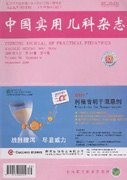|
|
Choices of timing and mode of blood purification in the treatment of immune diseases of nervous system
DING Min,ZHANG Zhen,LI Yu-mei
2019, 34(12):
993-997.
DOI: 10.19538/j.ek2019120606
The immune diseases of nervous system are a kind of nervous system diseases mediated by immune mechanism. High mortality and disability rates are its important characteristics. Early intervention and treatment can significantly improve the clinical outcomes of patients. At present, the main treatments for this kind of diseases include corticosteroid hormone, intravenous immunoglobulin(IVIG) and blood purification. Blood purification therapy has become the focus of current research because of its fast effect and other advantages. The main modes of blood purification therapy for this kind of diseases are plasma exchange and plasma immunoabsorption. Early application of blood purification therapy in patients with the acute attack and critical illness may lead to more significant clinical improvement. Therefore,blood purification may be an effective treatment for patients with the critical illness or when other medications are ineffective for the patients.
|

